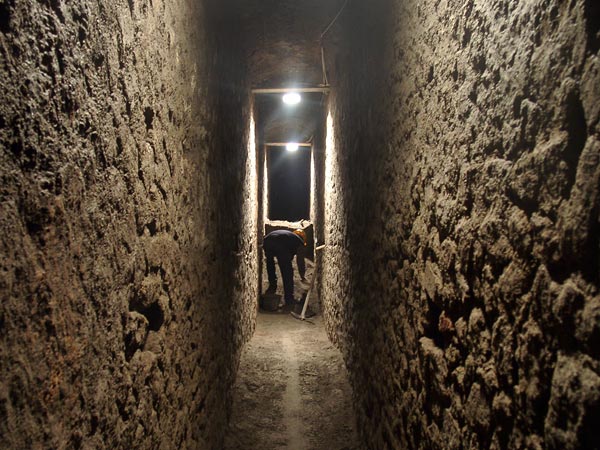
You might turn your nose up at sifting through hundreds of sacks of human excrement, but researchers are doing just that in Italy - and happily.
The unprecedented deposit is said to be yielding new insights into everyday life in the ancient Roman Empire.
Admittedly, at 2,000 years old, the feces "isn't remotely unpleasant," Roman historian Andrew Wallace-Hadrill said. "There's absolutely no scent. It's exactly like earth compost."
Ten tons of the stuff has been excavated from a cesspit beneath the ancient town of Herculaneum, near Naples.
Flushed down sewers from apartment blocks and shops, the deposit - the largest collection of ancient Roman garbage and human waste ever found, researchers say - dates to about A.D. 79. That year a catastrophic volcanic eruption of Mount Vesuvius buried Herculaneum, along with its more famous neighbor, Pompeii.
Lost jewelry, coins, and semiprecious stones from a gem shop have been found, along with discarded household items such as broken lamps and pottery, according to Wallace-Hadrill, director of the Herculaneum Conservation Project, a Packard Humanities Institute initiative.
And, coming from a onetime district of shopkeepers and artisans, the organic material has revealed just what your run-of the-mill Roman might have eaten in this coastal town, according to project scientists, who collaborated with the British School at Rome and the archaeological authorities for Naples and Pompeii.
Fish, Fig, Fennel
Seeds, bones, shell fragments, and other remains suggest Herculaneum residents had a diverse diet, which included chicken, mutton, fish, fig, fennel, olive, sea urchin, and mollusk.
"This is absolutely standard diet for ordinary people in the town," Wallace-Hadrill said.
"It's a jolly good diet - any doctor would recommend it," he added.
While stuffed dormice and other such culinary delicacies of the Roman elite are well known from the historical record, less is known about standard Roman food, Wallace-Hadrill noted.
"It's very good to get a feeling for what the basics actually were."
"Foul Stuff" Revealing Roman Life
Measuring some 230 feet (70 meters) long, one meter (three feet) wide, and about seven to ten feet (two to three meters) tall, the large underground structure was first thought to be part of Herculaneum's drainage system. However, no outlet was found.
"All the foul stuff from the latrines and all the rubbish thrown down the chute accumulate and compost, as in a septic tank," Wallace-Hadrill said.
The waste was excavated and put through a series of graded sieves by a team led by Mark Robinson of the University of Oxford.
The first sieving captured larger objects such as pottery and bone. The second caught smaller objects, including nuts and seeds.
"It's in these progressive stages that, bit by bit, you capture more and more information," Wallace-Hadrill said.
Future microscopic analysis of bits of the ancient Roman stool could reveal evidence of disease, such as bacterial or parasitic infections, he added.
So far, only 70 of the 774 sacks of human waste - bagged by researchers over the past decade - have been examined.
"If you looked in detail at everything," he said, "it would take a lifetime."



Reader Comments
to our Newsletter